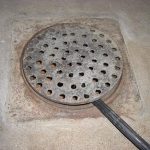Maintaining a clean and hygienic toilet is essential for every household. However, despite your best efforts, you may notice yellow water in your toilet bowl. This can be a cause for concern, but fear not, as there are easy ways to remove the yellow stains and keep your toilet sparkling clean.
Contrary to popular belief, yellow toilet water is not always a result of improper flushing. In fact, the main culprit is often iron and mineral deposits in hard water. While this may seem daunting, there are simple solutions to get rid of the yellow stains and prevent future buildup.
Why is My Toilet Water Yellow: The Most Common Reasons Explained
If you are experiencing yellow water in your toilet after flushing, it can be an unpleasant and frustrating experience. Not only does it ruin the look of your toilet bowl, but it can also make you feel uncomfortable using it. In this section, we will discuss the most common reasons for yellow toilet water and provide proper explanations.
Hard Water Residue and Minerals
If you live in an area where the water supply contains hard water, it can affect the color of your toilet water. Hard water contains various minerals, and if left untreated, can turn the toilet water yellow.
This is especially true if your toilet receives impure and poorly treated water from the main supply line. Unfortunately, this is a common cause for most homes worldwide.
Chloride and magnesium are two elements found in hard water and poorly treated water that can turn the toilet water yellow if they are present in large quantities. When the minerals are fewer, they won’t impact the toilet water. However, when the water contains too many minerals, including magnesium and chloride, they react with the water and turn it yellow.
Over time, the minerals will accumulate around the toilet wall. The longer they exist in the toilet bowl, the yellower the water will become. Gradual build-up of minerals will accumulate in large quantities around the toilet wall, and a portion of the accumulated mineral deposit will come from the wall when you flush the toilet. This turns the toilet water yellow, making it appear unclean and dirty.
Rust in Iron Pipes
Older homes and even many modern-day homes have iron pipes as the main supply line across the household. Cast iron pipes are used by plumbers to construct the water supply line of most homes due to their expanded lifespan and sturdiness. However, cast iron is prone to rust, and the pipes will develop rust over time.
If you see yellow toilet water after flushing and live in an old home, the problem may be linked with the rusted iron pipes used for the water supply line.
When the inside of the iron-made water supply line starts rusting, it will develop gradually. Thus, the inside of the pipe will have rusted iron particles. Water running through the pipe slowly accumulates the rust or iron particles. The iron particles are tiny and pretty brittle and easily break down when water runs through the pipes. After that, it runs along with the water.
When you flush the toilet after using, these iron particles come into the toilet bowl with the flush water, turning the toilet water yellow. Moreover, the high presence of iron in the supply water also transforms the toilet water yellow.
Rusted Nuts and Bolts
The final reason for yellow toilet water could be the rusted nuts and bolts. The toilet bowl and tank contain multiple bolts for secure attachment with the supply line and the bowl itself. When your toilet gets old, these nuts and bolts may catch rust due to inevitable reasons.
When the nuts and bolts attached to the toilet bowl and tank become too rusty, they will run into the toilet with the water. Thus, your toilet will appear yellow even after a flush. When you flush the toilet after use, the rust on the nuts will flow with the water due to its fragility and turn the toilet yellow. So, you will experience a yellow tint inside the toilet.
In conclusion, yellow toilet water can be caused by various factors, including hard water residue and minerals, rust in iron pipes, and rusted nuts and bolts. By understanding these causes, you can take necessary measures to fix the issue and restore the clean look of your toilet bowl.
How to Get Rid of Yellow Toilet Water
Clean the Rust:
If you notice yellow water in your toilet, it could be due to rusted nuts and bolts in the toilet setup. To eliminate this problem, you need to clean the rust off the affected areas.
To start, open the lid of the toilet tank and clean the bolts and pipe to remove as much rust as possible. You can use a hard-bristled brush with mild pressure to clean off the rust from the pipe and bolts. Alternatively, you can use a commercial toilet cleaner to remove the rust.
If the water supply line contains too much rust or it has become too old, it’s best to call a plumber to fix the rust or change the pipeline if possible.
Clean the Mineral Deposit:
If your water contains minerals such as chloride and magnesium, you should also clean the mineral deposit in the toilet. Mineral deposits mainly accumulate around the walls and sides of the toilet bowl and tank.
To clean the mineral deposit, use a brush or scrubber to clean around the toilet tank and bowl. Regular cleaning of the toilet with a commercial cleaning solution will also prevent residual build-up and stop your toilet from turning yellow.
Using a water softener or filtration system can also help prevent mineral build-up in your toilet. You can try using white vinegar or borax powder to clean the toilet bowl and tank. However, be careful not to use too much borax powder, as it can damage the toilet’s porcelain surface.
Regular maintenance of your toilet can go a long way in preventing yellow water stains. Clean your toilet at least once a week and consider using a water-softening system or filtration system to keep your toilet clean and free of mineral build-up.
Frequently Asked Questions
If you’re experiencing issues with your plumbing, you may have some questions about how to handle the situation. Here are some frequently asked questions:
- Can I use bleach to clean my toilet tank?
- No, you should avoid using bleach to clean your toilet tank. It can erode different parts of the toilet and may even eliminate the shine of the bowl.
- Can a water softener cause yellow water?
- Yes, a water softener may cause yellow water in the toilet. If the water softener is dormant, it will likely cause yellow water inside the toilet.
- Is yellow water harmful?
- Although yellow water appears unhygienic and dirty, it is usually not dangerous for your toilet. It won’t corrode the different parts of the toilet. But if not treated timely, it will reduce the shine of the porcelain or tiles of the toilet bowl.
Final Words
Maintaining a clean and hygienic bathroom is crucial for both personal health and social etiquette. Yellow water in the toilet bowl can be caused by mineral and rust deposits in the toilet bowl, tank, or water supply line. To keep your toilet free from yellow water, you can use a commercial cleaner and scrubber to remove the rust and mineral water residues.
Regular cleaning of your bathroom is also important to prevent the buildup of bacteria and other harmful substances. Make sure to clean the toilet bowl, sink, and shower regularly with disinfectants to maintain a healthy environment.




